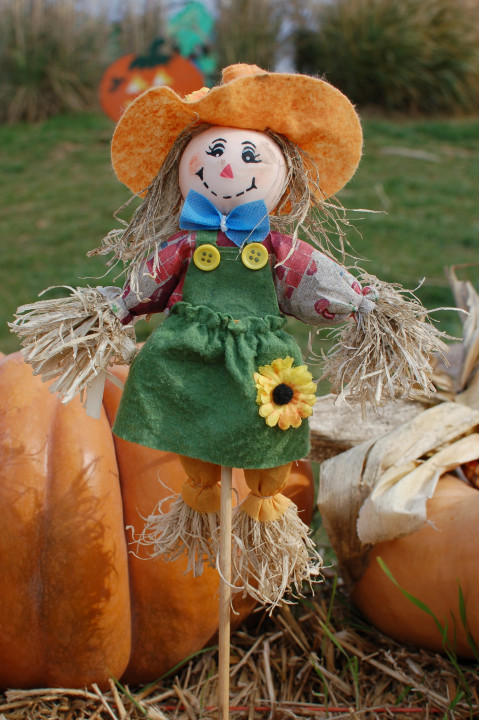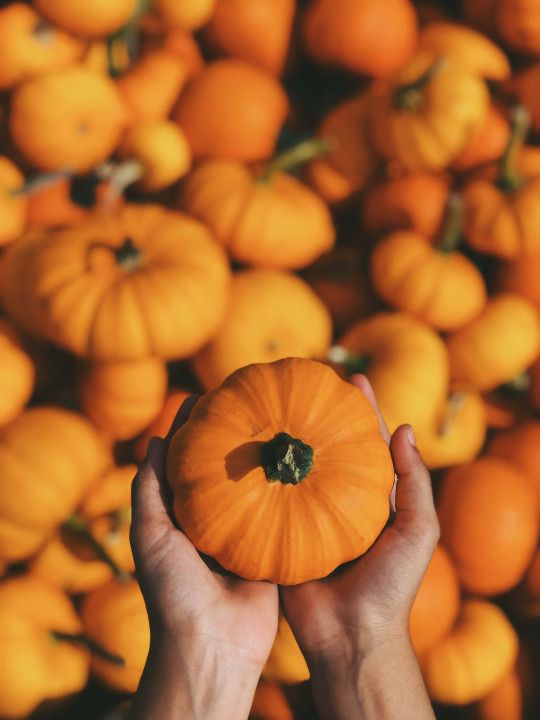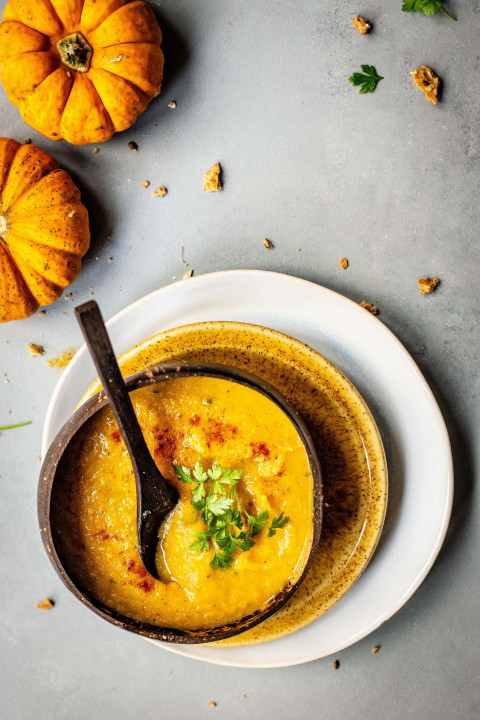Pump Up Your Pumpkins: Growing in Florida Made Easy
Are you a Florida resident with a green thumb and a passion for gardening? If you’ve ever wondered how to grow pumpkin in Florida’s unique climate, you’re in the right place!
Pumpkins have long been a symbol of fall festivities, and their versatility extends beyond Halloween decorations to delicious recipes and comforting autumn treats. However, cultivating pumpkins in Florida can be a bit challenging due to the state’s distinct weather conditions and soil types.
Fear not! In this comprehensive guide, we will walk you through the essential steps and best practices to successfully grow pumpkins right in your backyard, so you can enjoy the rewards of your labor and witness the magic of these vibrant orange fruits flourishing under the Florida sun.
Let’s roll up our sleeves and dive into the exciting world of pumpkin cultivation in the Sunshine State!

Getting Started: Planning and Preparation
Before diving into the pumpkin-growing process, it’s essential to have a solid plan and prepare your garden for success. Here are some key steps to help you get started:
Choosing the Right Pumpkin Variety
Florida’s climate and soil conditions may not be suitable for all pumpkin varieties, but there are several types that can thrive in the Sunshine State. Some popular varieties include:
- Seminole: This native Florida pumpkin is highly resistant to pests and diseases and can handle the heat and humidity well.
- Big Max: Known for producing large pumpkins, this variety can tolerate Florida’s climate but may require extra care and attention.
- Sugar Pie: A smaller, sweeter pumpkin that’s perfect for pies and baking, this variety can also grow well in Florida.
Consider your desired use for the pumpkins (e.g., carving, cooking, or decoration) and your available space when choosing a variety.
Assessing Your Garden’s Suitability
To ensure optimal growth, your garden should provide the following conditions:
- Full sun: Pumpkins need at least six hours of direct sunlight per day to thrive.
- Good drainage: Soggy soil can cause root rot and other issues, so make sure your garden has well-draining soil.
- Space: Pumpkin vines can spread up to 20 feet, so ensure you have ample room for them to grow.
Preparing Your Soil
Pumpkins are heavy feeders and require nutrient-rich soil to produce a bountiful harvest. Here’s how to prepare your soil:
- Test your soil: Before planting, it’s essential to test your soil’s pH level and nutrient content. Pumpkins prefer slightly acidic soil with a pH between 6.0 and 6.5. You can purchase a soil test kit from your local garden center or send a sample to a lab for testing.
- Amend your soil: Based on the results of your soil test, you may need to add organic matter, such as compost or well-rotted manure, to improve soil fertility and structure. If your soil is too alkaline, you can add sulfur to decrease the pH. If it’s too acidic, adding lime will help raise the pH.
- Create mounds or raised beds: To further improve drainage and encourage strong root development, consider forming mounds or raised beds for your pumpkin plants. These elevated planting areas should be about 12 inches high and 18 to 24 inches wide, with enough space between them for the vines to spread.
With the right planning and preparation, you’ll be one step closer to a successful pumpkin harvest in your Florida garden.
Planting and Nurturing Your Pumpkin Plants
Once you’ve chosen your pumpkin variety and prepared your garden, it’s time to plant and nurture your pumpkin plants. Here are some essential steps and tips to help your pumpkins thrive:
Starting from Seeds or Seedlings: Pros and Cons
You can either start your pumpkin plants from seeds or purchase seedlings from a nursery. Each option has its advantages and disadvantages:
Seeds
Starting from seeds allows you to choose from a wider variety of pumpkin types, and it’s generally more cost-effective. However, it requires more time and patience, as you’ll need to germinate the seeds indoors before transplanting them outside.
Seedlings
Purchasing seedlings saves time and ensures that you’re starting with healthy, established plants. However, the selection may be limited, and it can be more expensive than starting from seeds.
Consider your gardening goals, budget, and available time when deciding between seeds and seedlings.
Proper Spacing, Planting Techniques, and Support Structures
To give your pumpkin plants the best chance to grow and produce fruit, follow these planting guidelines:
Spacing
Allow enough space for your pumpkin plants to spread and grow without competition. For smaller varieties, space the plants 4 to 6 feet apart, while larger varieties should be spaced 8 to 12 feet apart.
Planting techniques
When planting seeds, sow them about 1 inch deep and cover them lightly with soil. If you’re transplanting seedlings, dig a hole slightly larger than the root ball and gently place the plant in the hole, ensuring that the top of the root ball is level with the surrounding soil. Firmly press the soil around the plant to eliminate air pockets and provide support.
Support structures
While not always necessary, providing support structures like trellises or A-frames can help keep your pumpkin vines off the ground, reducing the risk of pests and diseases. Ensure that the support structures are sturdy enough to handle the weight of the vines and fruit.

Caring and Disease Management
Proper care and maintenance are crucial for your pumpkin plants to thrive and produce a bountiful harvest. Follow these best practices:
Watering
Pumpkins require consistent moisture, especially during fruit development. In Florida’s hot climate, it’s essential to water deeply and regularly, aiming for 1 to 2 inches of water per week. Water early in the day to reduce evaporation and avoid wetting the leaves, which can encourage fungal diseases.
Feeding
To support their rapid growth, pumpkins need regular feeding with a balanced fertilizer. Apply a slow-release granular fertilizer at planting time, then switch to a liquid fertilizer every 2 to 4 weeks once the vines start to grow. Be cautious not to over-fertilize, as this can lead to excessive vine growth and reduced fruit production.
Pruning
Regular pruning helps maintain healthy growth and encourages better fruit development. Remove any dead or diseased leaves and vines, and trim back excessive growth to improve air circulation and sunlight penetration. You can also selectively remove some smaller fruits to direct the plant’s energy toward producing larger pumpkins.
Pest and disease management
Monitor your plants regularly for signs of pests and diseases. Common Florida pumpkin pests include squash bugs, cucumber beetles, and aphids, while diseases may include powdery mildew, downy mildew, and various blights.
Implement organic and sustainable pest and disease control methods, such as using insecticidal soap, introducing beneficial insects, and applying fungicides when necessary.
The Art of Pollination: Ensuring Fruit Set and Quality
Successful pollination is crucial for your pumpkin plants to produce fruit. Here’s what you need to know to ensure a bountiful harvest:
Understanding Pumpkin Plant Anatomy and Pollination Requirements
Pumpkin plants produce both male and female flowers, with the male flowers appearing first. The female flowers can be distinguished by the small swelling (the future fruit) at their base. For fruit to form, pollen from the male flower must be transferred to the female flower.
Encouraging Natural Pollinators or Hand-Pollinating Your Pumpkin Flowers
Insects like bees are the primary pollinators of pumpkin flowers. To attract these natural pollinators, plant a variety of flowers around your garden and avoid using harsh pesticides that may harm them.
If you’re concerned about inadequate pollination, you can hand-pollinate your pumpkin flowers. To do this, carefully remove a male flower from the vine and strip away its petals to expose the pollen-covered anther.
Gently brush the anther against the stigma of a female flower, transferring the pollen. You can also use a small paintbrush or cotton swab to collect pollen from the male flower and apply it to the female flower’s stigma.
Monitoring and Maintaining Healthy Fruits
After successful pollination, keep an eye on your developing pumpkins and provide proper care to ensure quality fruit. Regular watering, feeding, and pruning will help your pumpkins reach their full potential.
Additionally, placing a barrier like straw or a piece of cardboard under the fruit can prevent rot and damage caused by direct contact with the soil.

Harvest and Storage
After months of nurturing your pumpkin plants, it’s finally time to enjoy the fruits of your labor. Here’s how to determine when your pumpkins are ripe, how to harvest them, and how to store them for long-lasting freshness.
Recognizing When Your Pumpkins are Ready for Harvest
Determining when your pumpkins are ripe and ready to harvest can be a bit tricky, but there are some telltale signs to look for:
- Color: Most pumpkin varieties will change color when they’re ripe, such as turning from green to orange or deepening in color if they’re already orange.
- Skin hardness: When a pumpkin is ripe, its skin will become hard and resist punctures from a fingernail.
- Stem color and texture: A ripe pumpkin’s stem will usually become dry, hard, and darker in color.
- Vine condition: If the vine connecting the pumpkin to the plant starts to wither and die, it’s likely that the pumpkin is ripe.
Keep in mind that these signs can vary depending on the pumpkin variety, so it’s essential to be familiar with the specific characteristics of your chosen type.
Proper Harvesting Techniques
To preserve the quality and freshness of your pumpkins, follow these harvesting guidelines:
- Use clean, sharp tools: Use a pair of pruning shears or a sharp knife to cut the stem, ensuring that you don’t damage the fruit.
- Leave a stem: When cutting the stem, leave about 3 to 4 inches attached to the pumpkin. This helps prevent rot and extends the pumpkin’s storage life.
- Handle with care: Avoid carrying your pumpkin by its stem, as this can cause it to break off and shorten its storage life. Instead, support the pumpkin from below with your hands or use a garden cart to transport it.
Storing Your Pumpkins
To keep your pumpkins fresh for as long as possible, follow these storage tips:
- Cure your pumpkins: Allowing your pumpkins to cure in the sun for about a week helps harden their skin and enhances their flavor. Place them in a sunny spot, ensuring that they don’t touch each other and are protected from rain.
- Store in a cool, dry place: Ideal storage conditions for pumpkins are a temperature of 50-55°F (10-13°C) and a relative humidity of 60-75%. A basement, garage, or well-ventilated shed can be suitable storage locations.
- Check regularly: Inspect your stored pumpkins frequently for signs of rot or damage, and remove any affected pumpkins immediately to prevent the spread of decay.
With proper harvesting and storage techniques, you can enjoy your homegrown Florida pumpkins for several months.

Pumpkins Beyond the Jack-O-Lantern
While carving jack-o-lanterns is a popular pumpkin activity, there’s so much more you can do with your homegrown harvest. Here are some creative and delicious ways to enjoy your pumpkins:
Pumpkin-Inspired Dishes for Every Meal
From breakfast to dinner, pumpkins can add flavor and nutrition to your meals:
- Breakfast: Start your day with pumpkin pancakes, pumpkin-spiced granola, or a pumpkin smoothie.
- Lunch: Enjoy a hearty pumpkin soup, a mixed greens salad with roasted pumpkin, or a pumpkin and goat cheese quiche.
- Dinner: Savor pumpkin risotto, pumpkin-stuffed ravioli, or a pumpkin and chickpea curry.
- Dessert: Indulge in pumpkin pie, pumpkin cheesecake, or pumpkin bread pudding.
Preserving Your Pumpkin Bounty
If you have more pumpkins than you can eat fresh, consider preserving them for later use:
- Freezing: Cooked and pureed pumpkin can be frozen in airtight containers or freezer bags for up to a year.
- Canning: Pumpkin can be canned using a pressure canner, following proper safety guidelines. Note that canned pumpkin should be in cubes, not pureed, for safety reasons.
- Dehydrating: Thin slices of pumpkin can be dried in a food dehydrator or a low-temperature oven to make pumpkin chips or to use in soups and stews later.
Sharing Your Pumpkin Harvest with Friends and Family
Don’t forget to share the joy of your homegrown pumpkins with others:
- Host a pumpkin-themed dinner party: Invite friends and family to enjoy a meal featuring your homegrown pumpkins in various dishes.
- Gift pumpkin treats: Share your harvest by gifting homemade pumpkin bread, pumpkin butter, or pumpkin-spiced nuts.
- Donate to a local food bank: If you have an abundance of pumpkins, consider donating some to a local food bank to help those in need.
Tips and Tricks for Long-Term Success
Growing pumpkins in Florida is a rewarding experience, but it’s essential to maintain your garden for long-term success. Here are some tips and tricks to help you achieve continued pumpkin-growing prosperity:
Maintaining Healthy Soil and Crop Rotation Practices
Healthy soil is the foundation of a thriving garden. To keep your soil fertile and productive, follow these guidelines:
- Add organic matter: To enhance the structure and fertility of your soil, it’s vital to regularly add compost, well-rotted manure, or other organic materials.
- Test your soil: Periodically test your soil’s pH and nutrient levels to ensure that your plants have the necessary nutrients for optimal growth.
- Rotate your crops: Practicing crop rotation helps prevent the buildup of pests and diseases and maintains soil fertility. Avoid planting pumpkins in the same spot for at least three years, and alternate with unrelated crops such as legumes or leafy greens.
Planning Ahead for Seasonal Changes
Expanding your pumpkin-growing repertoire can be an exciting endeavor. Consider trying new varieties and adjusting your planting schedule to suit Florida’s unique climate:
- Experiment with different varieties: Each year, try growing different pumpkin varieties to discover which ones perform best in your garden and suit your needs.
- Adjust your planting schedule: In Florida, you may be able to grow pumpkins during different seasons, depending on the variety. Consult local gardening resources to determine the best planting times for your chosen types.
Frequently Asked Questions
Still not sure if you can grow pumpkins in Florida? Here’s a quick Q&A to help answer any remaining questions:
Q: How well do pumpkins grow in Florida?
A: Pumpkins grow exceptionally well in Florida. With the right variety, appropriate soil preparation, and proper care, you can enjoy a bountiful harvest of pumpkins year-round.
Q: How often do you water pumpkins in Florida?
A: To ensure healthy growth and development, pumpkins should be watered deeply at least once a week. In hot, dry weather, an additional watering may be necessary to keep the soil from drying out completely.
Q: How long will pumpkins last in Florida?
A: When properly harvested and stored, many varieties of pumpkin can last for several months. But to enjoy the freshest flavor, it’s best to consume your homegrown pumpkins within a few weeks of harvesting.
Q: Do pumpkins need full sun in Florida?
A: Pumpkins need at least six hours of direct sunlight per day, so it’s important to choose a location that receives plenty of sun. Without enough sunshine, pumpkins may not develop properly or produce a good yield.
Q: Can you throw a pumpkin in some soil and then the next year it grow into a pumpkin?
A: Unfortunately, no. If a pumpkin is left in the soil over winter, it will decompose and not produce a viable seedling the following year. To ensure successful germination, you’ll need to start with fresh pumpkin seeds each season.
Q: Are there any diseases that can affect pumpkins grown in Florida?
A: Yes, unfortunately there are a few fungal diseases that can affect pumpkins grown in Florida, including powdery mildew and downy mildew.
To prevent these diseases, water the soil directly rather than wetting the foliage, and provide adequate air circulation between plants. If you do notice signs of infection, remove affected foliage immediately to avoid it spreading to other plants.
Grow Something Else in Florida
Florida’s climate is not limited to cucumbers! There are a wide variety of vegetables and fruits that you can grow in your Florida garden.
If you’d like to try something different, consider eggplant, squash, tomatoes, peppers, okra or even tropical fruits such as mangoes or bananas. With the right preparation and care, these crops can thrive in the Florida: